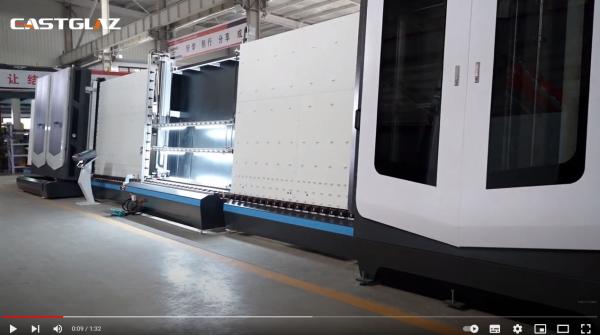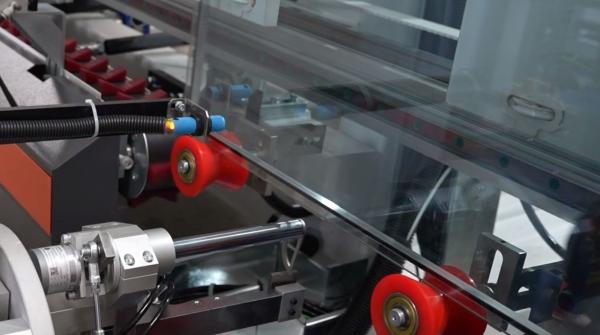Causes and solutions for defects in laminated glass

As an important component of architectural glass, laminated glass is widely used in the construction industry, transportation industry, aviation field, chemical industry, and military weapons and equipment such as tanks. However, in the production process, laminated glass has various defects that affect the use of laminated glass. Let's start with the production process of laminated glass and analyze the causes of its appearance quality defects and performance quality defects. Weihao Glass has more than 20 years of production experience and has summarized new methods to improve the quality of laminated glass. In order to increase production capacity in future production, reduce the production of unqualified products, produce high-quality laminated glass for customers, and improve customer satisfaction. 2 Laminated glass Laminated glass is a composite glass product made of two or more pieces of glass, with an organic material bonding layer sandwiched between two layers of glass, and heated and pressurized. The commonly used organic material bonding layer is polyvinyl butyrate film (i.e. PVB film). PVB film has special excellent properties. The optical index of the film is very good, the light transmittance reaches more than 90%, and the heat resistance, cold resistance, impact resistance, elasticity, moisture resistance and aging resistance are all very good. Its refractive index is almost the same as that of glass. This kind of film does not harden at temperatures above -50℃, and has good bonding properties at 130~140℃. At this temperature, the glass is pressed with high pressure and the glass is firmly bonded to the bonding layer. Laminated glass has a high-strength, elastic and penetration-resistant interlayer, which can withstand huge impact forces. Even if the glass is broken, the fragments are still attached to the film, so it has high safety performance.
3 Laminated glass production process The glass to be laminated is placed in a washing machine, which is cleaned and dried by the washing machine and then transferred to a temperature and humidity controlled lamination room, where the appearance of the glass is usually inspected. Next, the cut film is placed on the glass surface. The film needs to be placed flat to ensure that there are no wrinkles, and then the second cleaned glass is placed on the film - that is, a laminated glass has been laminated. The lamination process needs to be carried out in a very clean environment. The operator needs to wear a hood and gloves to cut off the excess film on the edge from the edge of the laminated glass. Then the glass is positioned and sent to the rolling section, where the glass is slowly heated and the rubber-coated roller is used to press out the air remaining between the glass and the film, and the edges of the glass are sealed. Finally, the laminated glass is placed in an autoclave, which is the last process of laminated glass. It allows the residual air to blend into the film and achieve uniform fluidity of the film. The autoclave process strengthens the adhesion between the film and the glass, thereby producing a piece of glass that looks like a whole - laminated glass.4 Quality defects of laminated glass In the actual production process, the quality defects of laminated glass can be roughly divided into two types: appearance defects and performance quality defects. Below we discuss the causes and solutions of different defects:
4.1 Original sheet defects As the original sheet of laminated glass, it must meet its use requirements. Optical deformation, bubble inclusions, stones, ribs, nodules, etc. are all inherent in the original sheet. Therefore, during the production process, the glass should be strictly inspected and unqualified original sheets should be eliminated.
4.2 Scratches and water marks Scratches and water marks usually occur during glass pretreatment. During the cutting stage, the cleanliness of the cutting platform and the unloading platform largely determines the amount and size of the scratches. The reason for the edge grinding stage is that the glass debris is not processed, and the belt pressure of the edge grinding machine is set too high, which crushes the edge of the glass; the main reason for the water marks is that the position of the wind knife is incorrect during the cleaning process after edge grinding, and the wind pressure is not high, resulting in the water attached to the glass surface not being blown dry. The solution is to adjust the wind knife height according to different glass thicknesses, adjust the cleaning speed according to actual conditions, and adjust the placement angle of the glass during cleaning. 4.3 Bubbles 4.3.1 Small bubbles on the edge of the glass In the initial stage of the autoclave, when the pressure of the autoclave returns to normal, the temperature of the glass and the film is still very high (especially the upper half of the glass edge). Therefore, the gas will be discharged from the edge of the film. The main reason for this problem is when the autoclave is completely decompressed, not when the door of the autoclave is opened.
Solution: Extend the cooling time of the autoclave until the temperature of the glass and the film is completely reduced to about 40℃, then completely decompress the autoclave, immediately open the hatch, and measure the temperature of the glass. Compare this temperature with the temperature display value of the autoclave. If the deviation is large, the temperature sensor device needs to be corrected. The sensor can be placed in ice water at 0℃ or in boiling water at 100℃.
4.3.2 Large bubbles on the edge of the glass
1) The semicircular bubbles that appear at the bottom of the glass are caused by the working support material in the autoclave being too soft, causing the laminated glass to be separated and form bubbles.
2) Solution: Use harder materials for the working support material.
3) The semicircular bubbles that appear around the glass are caused by the poor sealing of the edges after the glass is preheated and pre-pressed, resulting in air entering the film of the laminated glass during high temperature and high pressure processing in the autoclave; or the humidity of the storage environment of the opened film is too high.
4) Solution: Ensure the sealing of the glass edges by increasing the preheating temperature.
Store the opened film in an environment with a relative humidity of 25-5% (PVB storage conditions: the film can be stored in a room with a room temperature and dryness for three years under sealed packaging, and the storage temperature is required to be 8-0℃. The opened film is stored in a room with controlled temperature and humidity, and the temperature is required to be 18-20℃ and the relative humidity is 25-30%).
4.3.3 Bubbles are distributed in various positions
1) Incorrect pretreatment process. If the temperature is too low, the film cannot be fully unfolded, and gas will exist between the glass and the film; if the temperature is too high, the edge of the film is sealed too early, and a large number of bubbles will remain between the glass and the film and cannot be eliminated.
2) Solution: Analyze the parameters of the pretreatment process and debug the equipment correctly.
The surface temperature of the glass can be increased, but a better way is to reduce the working speed of the pretreatment.
 en
en Spanish
Spanish Russian
Russian Arabic
Arabic Portuguese
Portuguese Italian
Italian French
French Turkish
Turkish Vietnamese
Vietnamese Thai
Thai






